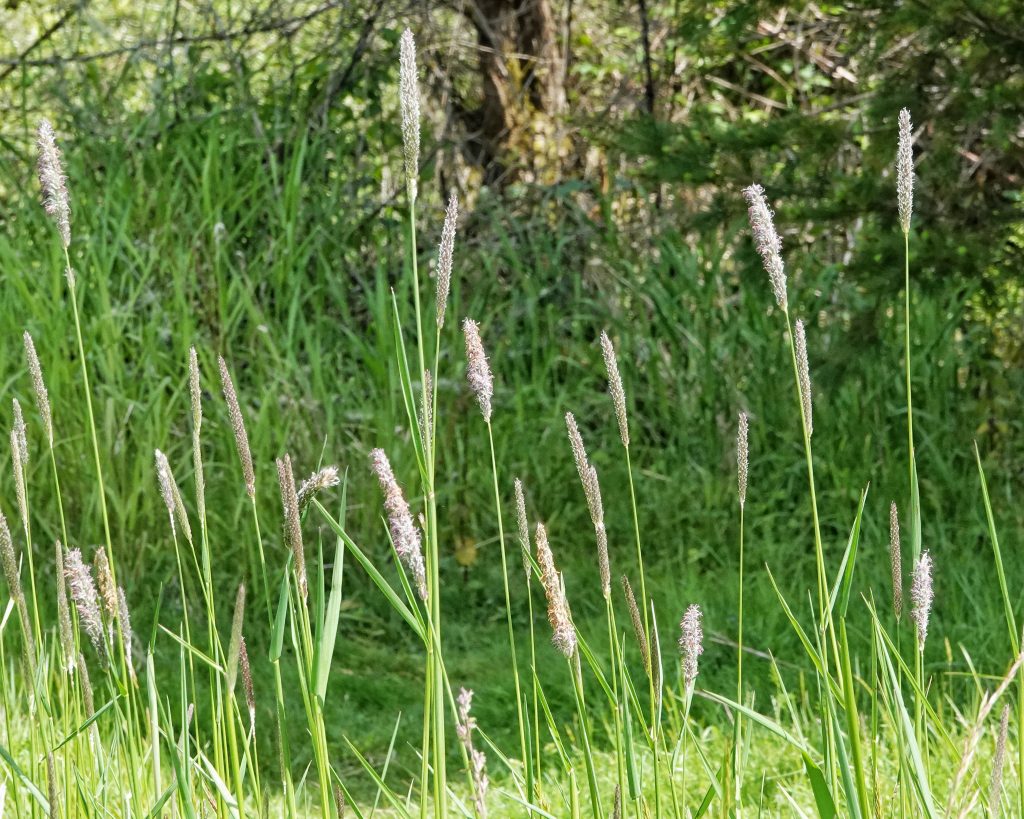
I’ve forgotten almost everything I learned from Cindy Roché when I took her grass workshop last June, but I still have her book, and apparently a vague memory of early blooming grass with a cylindrical seed head being a foxtail of some sort. So when I saw this striking and handsome grass last Tuesday whilst walking with my nbo Morgan at the Salmon Creek Greenway, I was determined to try to identify it.
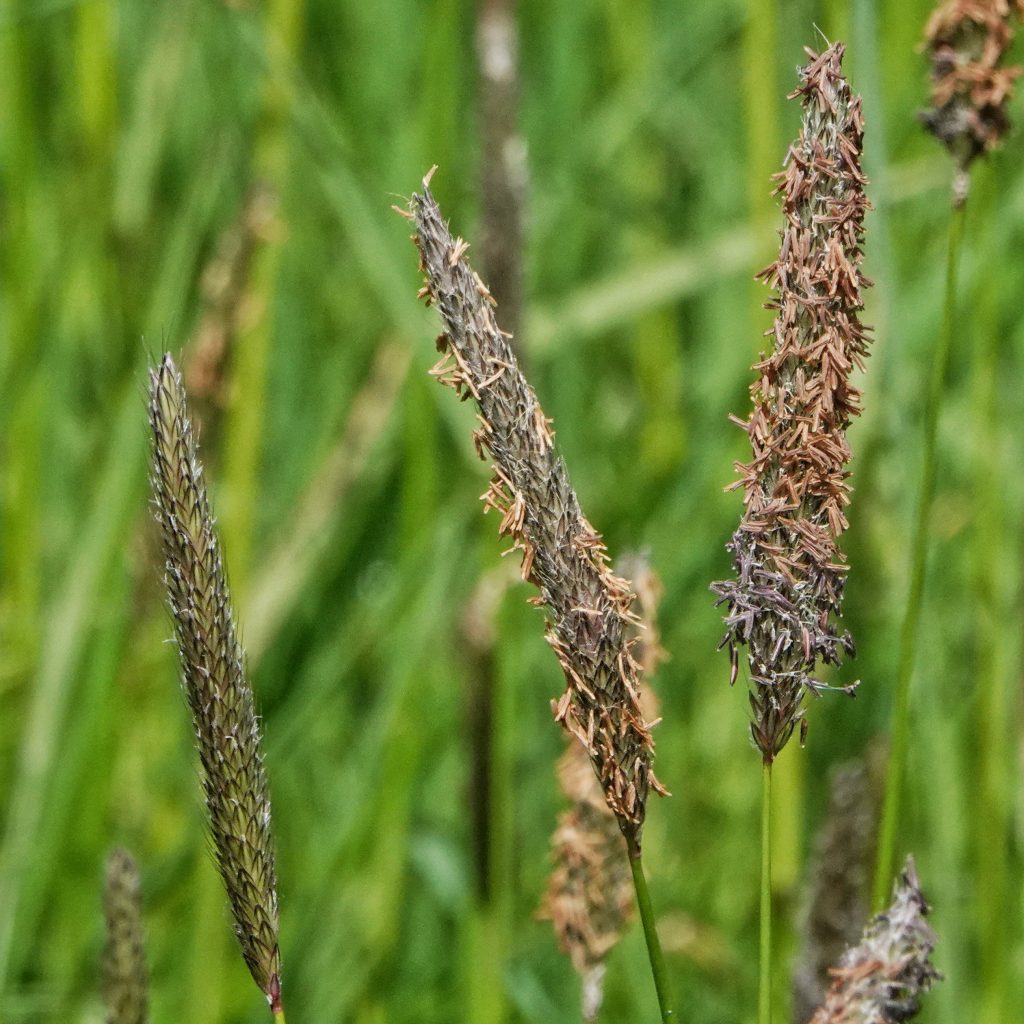
I’d like to say I keyed it out, but that would be a lie. I paged through the species descriptions until I found something that looked right, and then tore apart the raceme and compared the spikelets to the photos in ‘Field Guide to the Grasses of Oregon and Washington’ (Roché/Brainerd/Wilson, et al.; 2019), the bible for northwest grass identification. Alopecurus pratensis looked like like a very good match, so I selectively went backwards through the key until I was pretty certain that that was it. Then I sent some photos to Cindy, who confirmed my id and said I hadn’t lost my grass identification skills, although to the best of my knowledge I’ve never actually had any such skills.
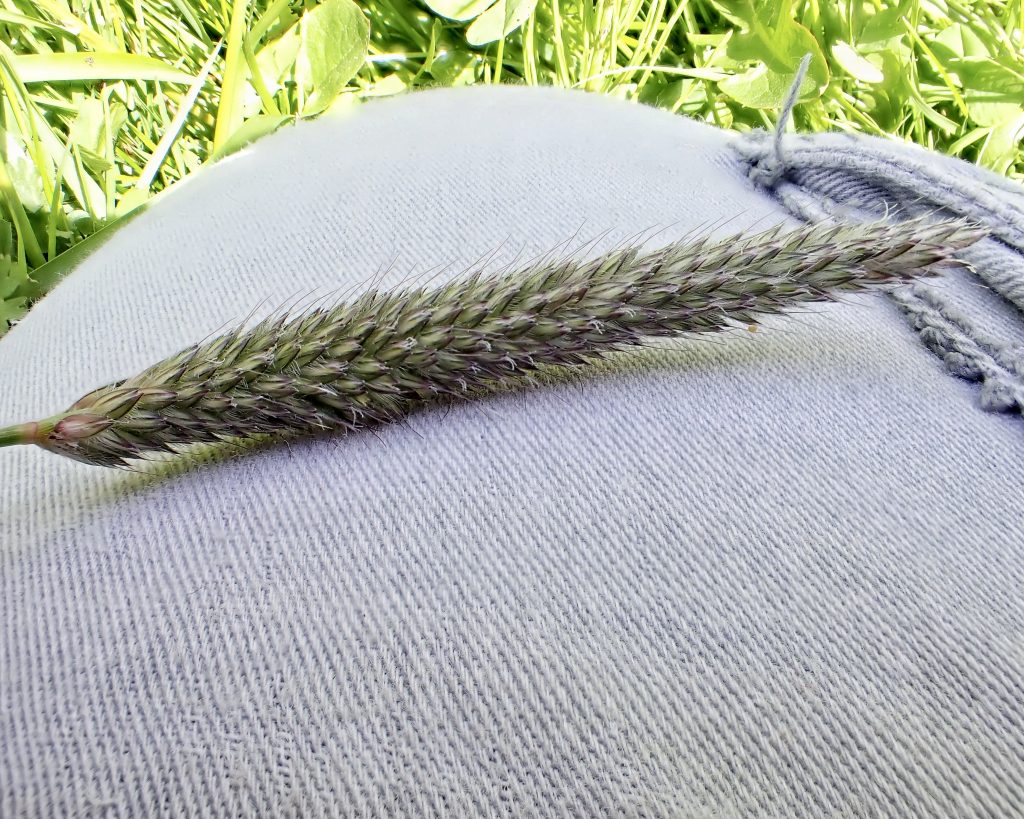
This grass is an import from Europe and North Africa, brought to America by a European immigrant for use as a forage grass in the late 1800s. It’s tolerance for periodic immersion makes it a good hay and forage crop in riparian flood plains and vernally wet fields and meadows, and it’s tolerance for drought and freezing allows it to thrive in a diversity of climate zones. It also provides some of the best early season forage, with both higher growth rates and higher nitrogen than most other grasses. It has since naturalized throughout the northern half of North America. And apparently most of the seed harvested for use in the US comes from the High Desert in Oregon.
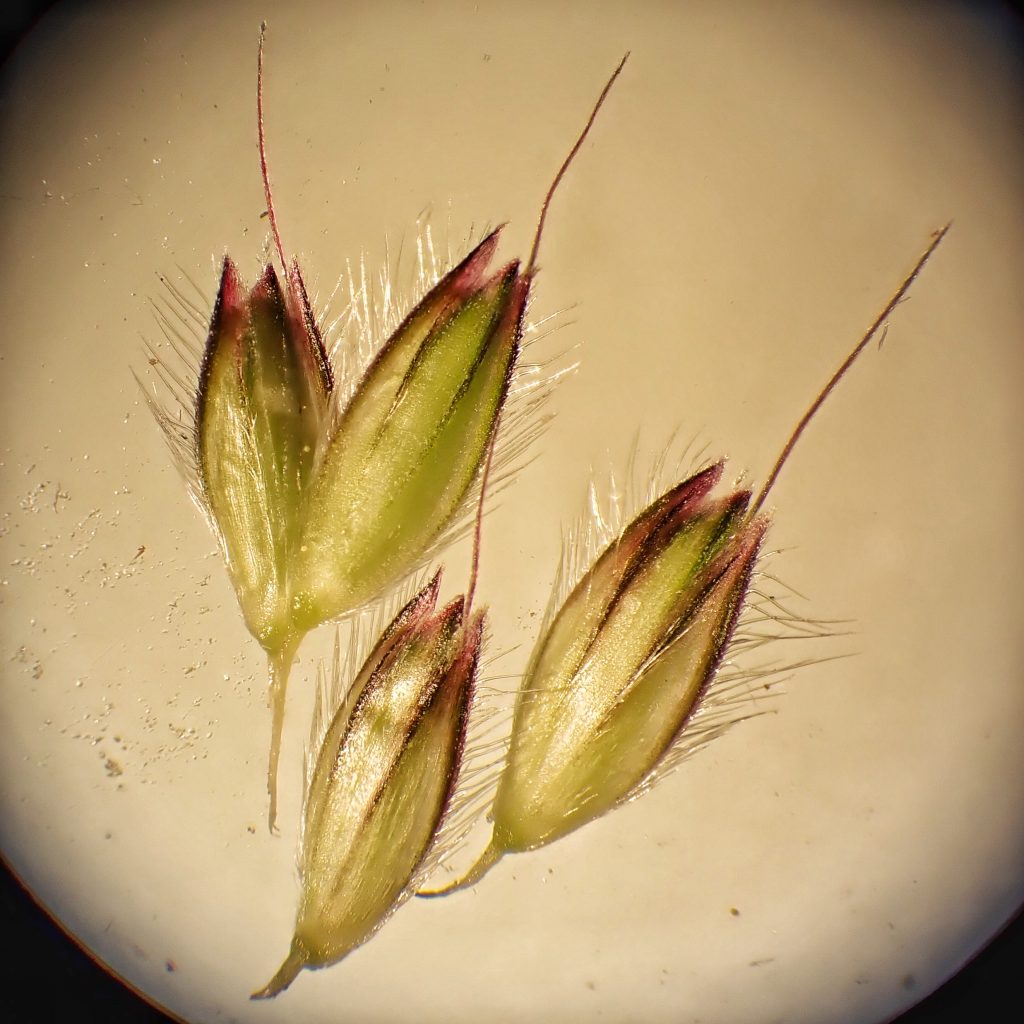
Description-Fairly tall (up to 44”), rhizomatous, perennial grass with a long, round, dense seed head and flat leaf blade up to a half inch wide; spikelets 4-6mm long; glumes are 4-6mm long, with a hairy keel and straight tips; lemma usually purplish, with a pointed tip, and have a single, long (5-10.5mm) awn that extends 2-5.5mm beyond the lemma.
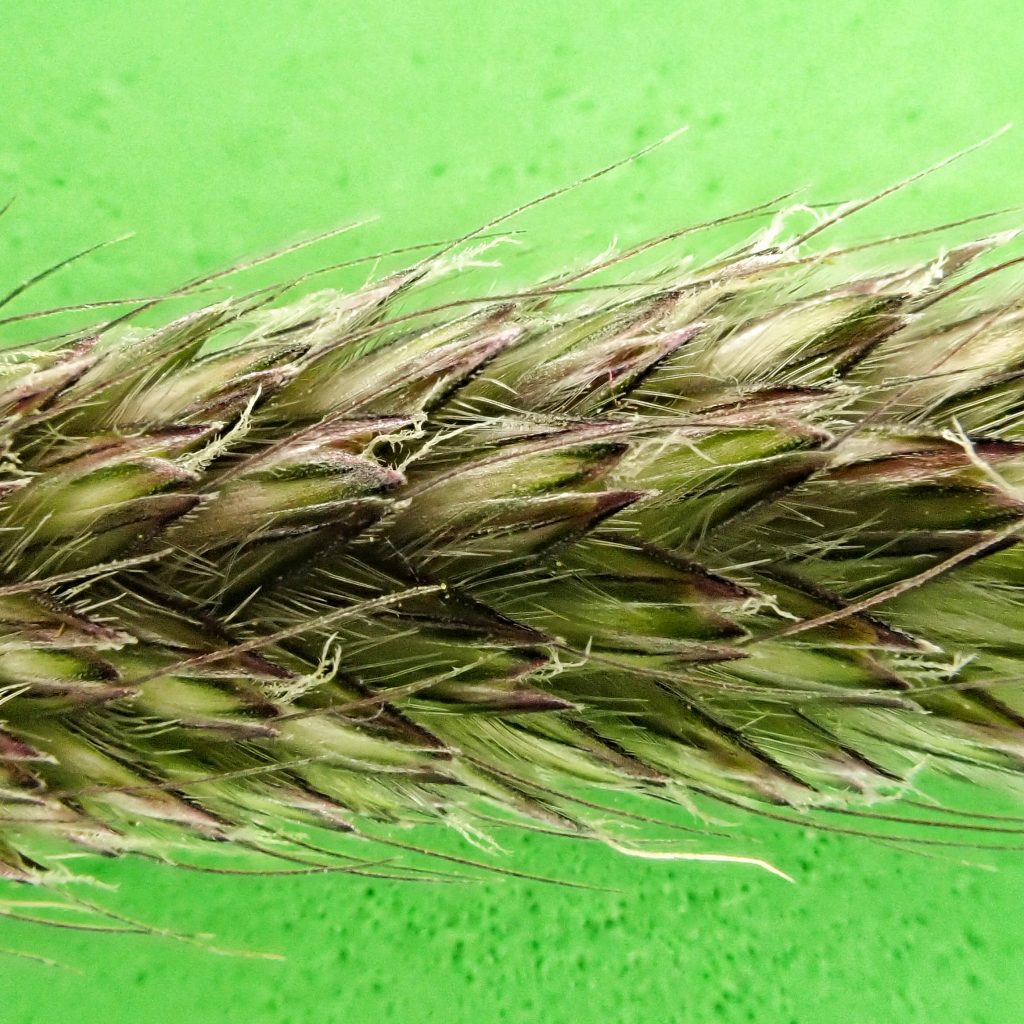
Similar species–Alopecurus arundinaceous has blunt lemma with lead grey tips, glumes curve outward at maturity, only found in scattered locations east of the Cascades; A. aequalis has spikelets less than 4mm long, with awns that are hidden by the glumes or extend only a mm; Phleum pratense (Timothy) has an awn on each glume, rather than a single awn on the lemma, flowers after Alopecurus pratensis is done, and grows in drier habitats.
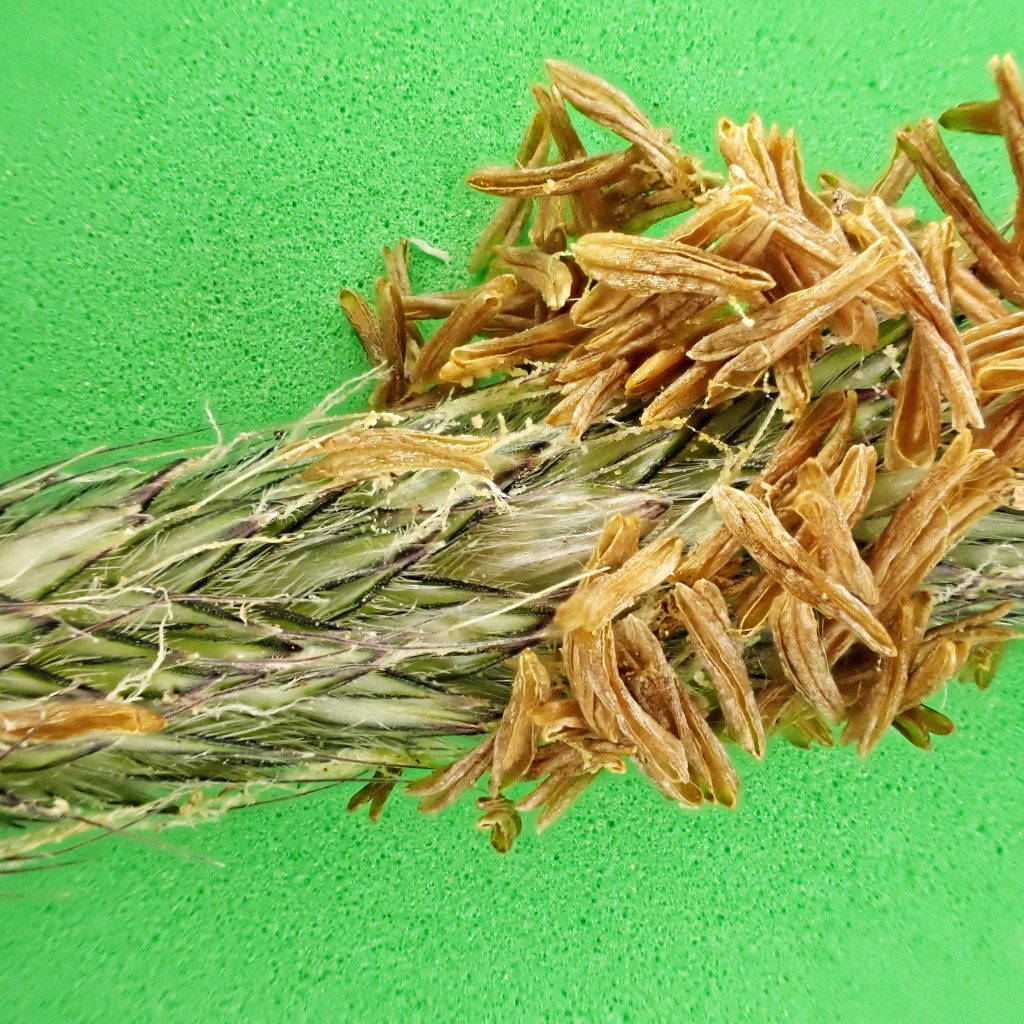
Habitat– Widely planted; feral populations are found in wet to mesic meadows, fields, ditches, and alongside roads, up to 7,000’ elevation.
Range-European native, now naturalized throughout North America; region wide in appropriate habitat, except seemingly absent from the Columbia Basin in eastern Washington and more or less absent near the coast.
Reproductive timing-Early spring, March through June, depending on the weather and elevation.
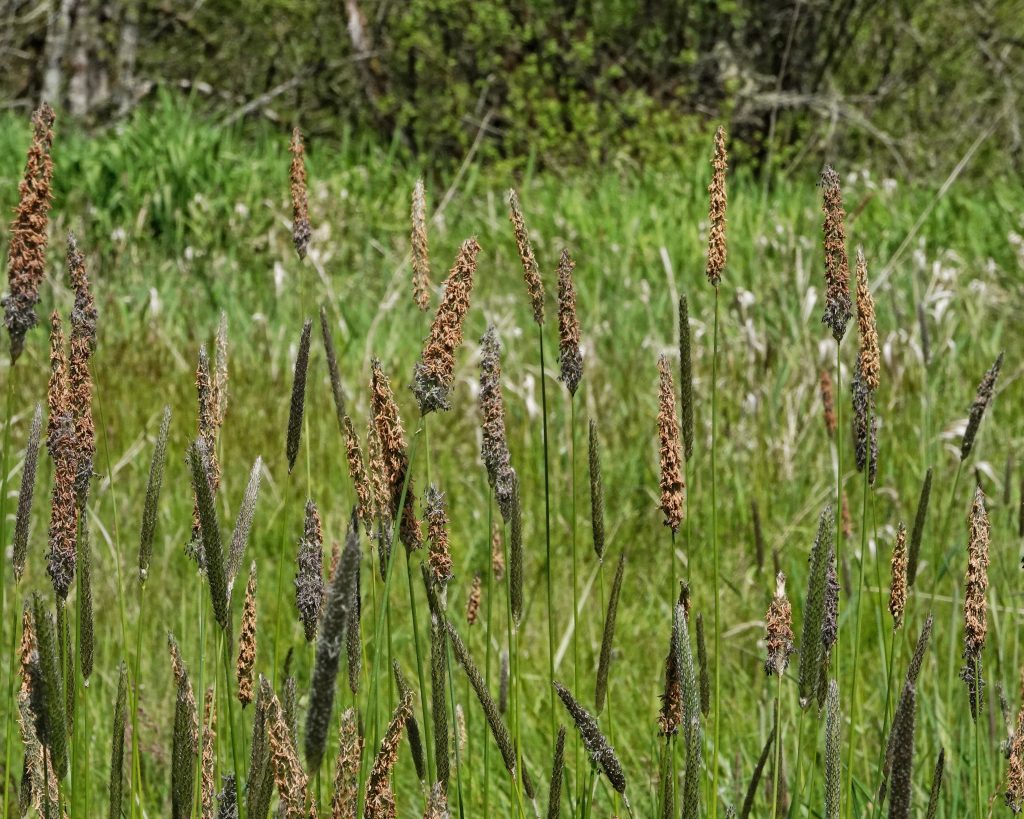
Eaten by-Hooved mammals, rodents, and lagomorphs (rabbits and their kin) undoubtedly consume some of these grasses and their seeds, as do some seed eating birds, but I cannot find specific references to Meadow Foxtail; many Lepidoptera utilize grasses for larval hosts, probably including this one, but again, I can find nothing specific; it is eaten by the aphids Oulema melanopus, Sitobion avenae, Schizaphis graminum; probably used by larvae of leaf mining flies in the genera Hydrellia, Phytomyza, Cerodontha, and Liriomyza; some gall-midges in the family Cecidomyidae attack the seed head; the nematodes Heterodera avenae, H. schachtii, Pratylenchus neglectus, P. penetrans, Subanguina radicicola, and Tylenchus hordei apparently feed on this grass; it is susceptible to a wide variety off fungus, including those in the genera Claviceps, Pestalozzina, Sclerospora, and Ustilago, amongst others.
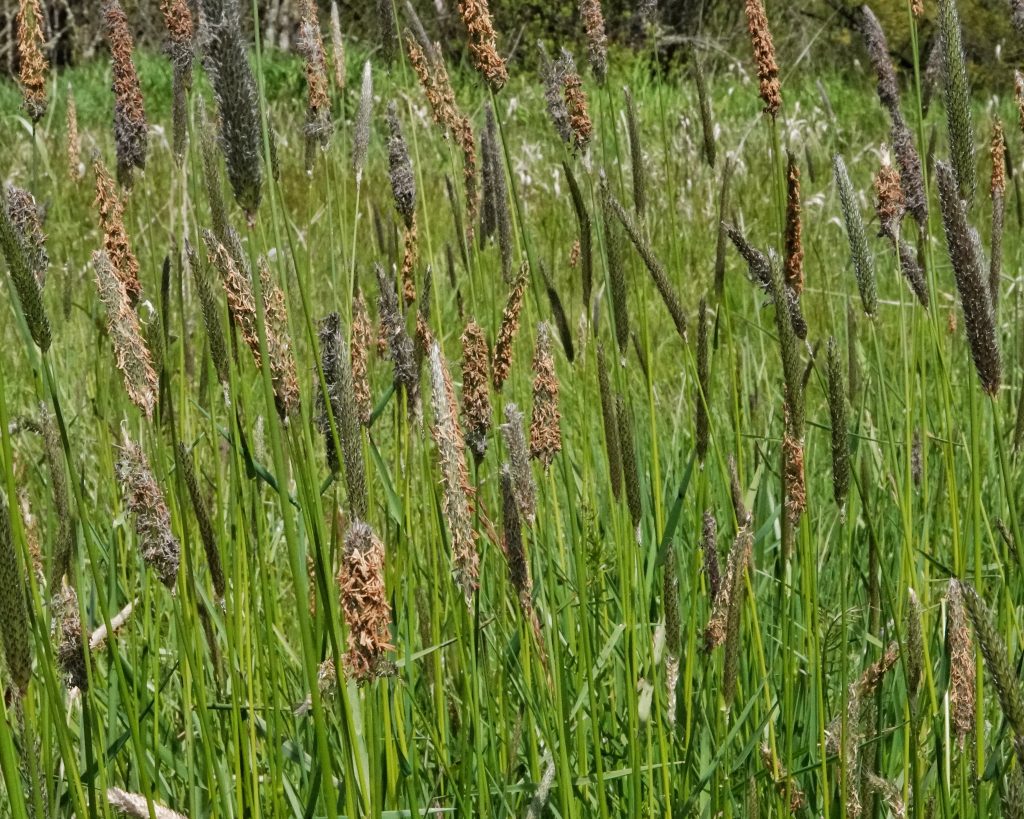
Etymology of names– Alopecurus is from the Greek word for ‘foxtail’, referring to the shape of the seedhead. The specific epithet pratensis is from the Latin for ‘meadow’, referring to its common habitat. And this combination leads directly to the common name of Meadow Foxtail.
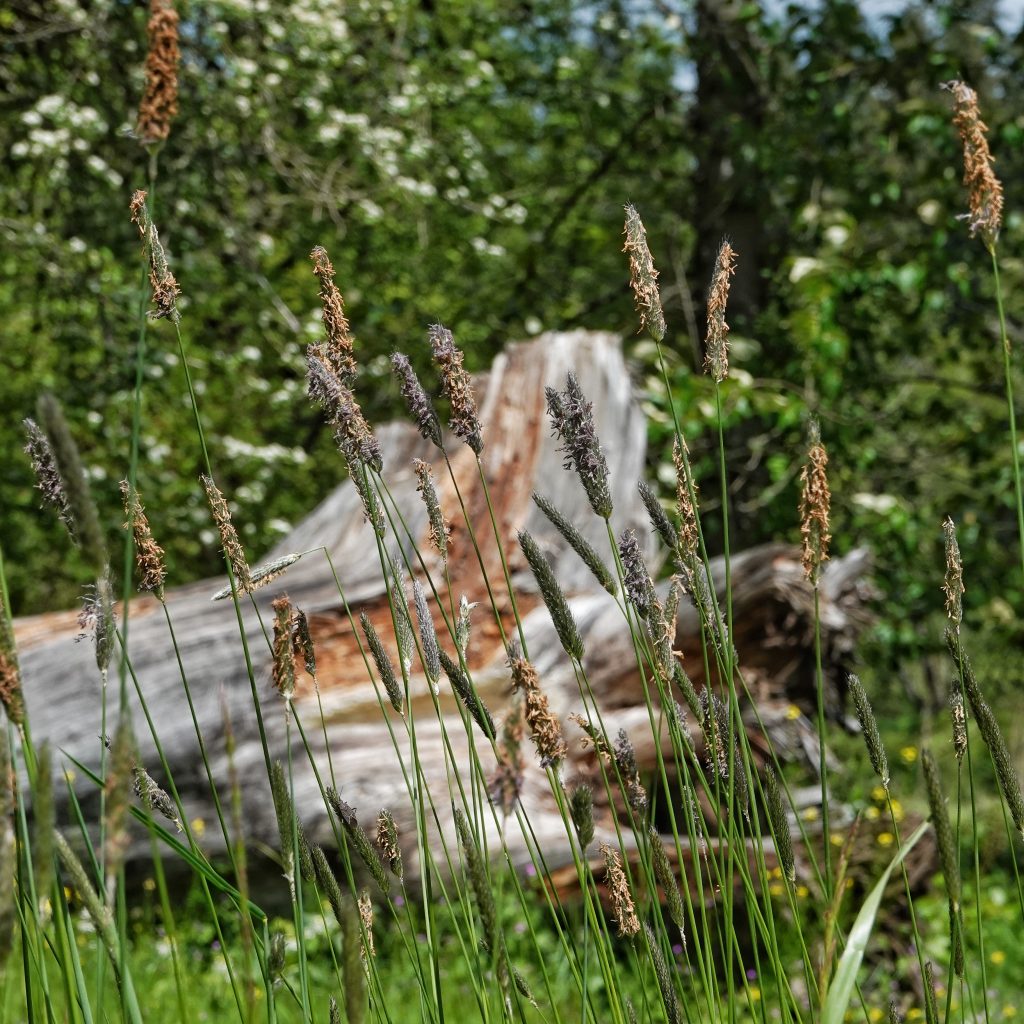
https://www.illinoiswildflowers.info/grasses/plants/mdw_fxtail.htm
https://ir.library.oregonstate.edu/downloads/bk128b388
https://www.cabi.org/isc/datasheet/4361
http://floranorthamerica.org/Alopecurus_pratensis
OregonFlora Alopecurus pratensis
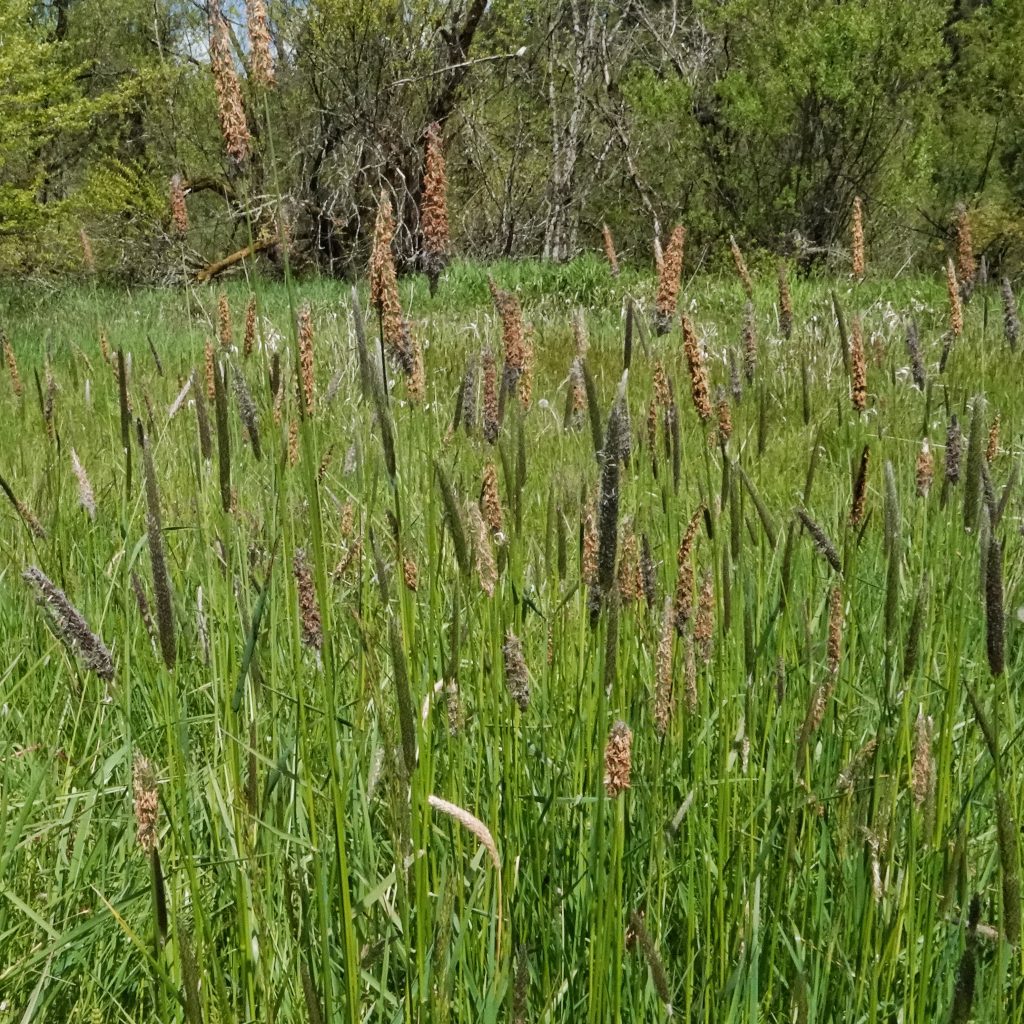
Dan what was that grass workshop you mentioned, it sounds interesting! Funny how I never really think much about grass, this post made me think a bit about paying more attention to the different grasses
You can contact Cindy Roché at grassesandmore@gmail.com
She puts on a few work shops every year. Probably has one coming up. It was very interesting!
Grasses are hard! It’s one of those things I *can* do, but really shy away from–same as all the little grey moths you’re so adept at keying out.
Yes! But that makes it even more satisfying when I get one right. And, if it has distinctive field marks, I feel like I’ve been introduced to a whole new group of friends. It’s always interesting to me how being able to put a name and some ecological understanding to something allows me to ‘see’ it more frequently in the landscape